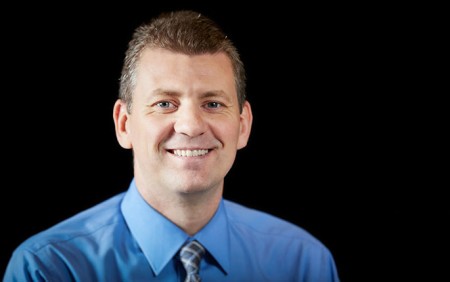
By Andrew Stokes
When a loose spark or a forgotten cigarette sets off a fire, we have people we can call who rush to help. While everyone else runs away, it’s firefighters who run towards the blaze.
It’s a dangerous job, but for the last 15 years, Glen Selkirk, a professor in the kinesiology program at the University of Guelph-Humber (UofGH), has made it his mission to keep firefighters safe. He’s conducted studies on firefighter stress responses, and how they manage heat stress and heat illness. With support from the UofGH Research Grant Fund, his most recent research looks at firefighters’ susceptibility to chemical exposure.
“These are people whose job it is to keep the public safe. It’s a noble profession,” says Selkirk. “It was staggering to me how few minds were out there trying to keep these people safe.”
In 2000, Selkirk started studying firefighting gear after being approached by Toronto Fire. Until just a few years prior, firefighters wore long rubber raincoats and boots that focused on keeping them dry. New outfits, called bunker gear, were made to be heat resistant and breathable, allowing firefighters to get closer to and deeper into fires. Getting closer meant getting hotter, and heat stress was a growing problem.
Selkirk’s research led to changes, and soon firefighters were allowed to wear shorts under their bunker gear instead of long pants.
“From a heat stress perspective, it was a big improvement,” he says. “A lighter base layer under their bunker gear made the firefighters much more heat tolerant. But, it may be something of a double-edged sword.”

Because bunker gear is designed to be breathable, it means vapour can get out of the suit and soot can get in. As many materials combust in house fires, they often release harmful chemicals that get trapped in soot and can land on a firefighter’s skin. A growing body of research shows that prolonged exposure to this soot can increase the risk for cancer.
Selkirk’s latest research seeks to address the problem. Along with his team of student researchers, Selkirk had a team of firefighters wear different equipment configurations as they worked to extinguish manufactured fires to determine which mix of gear offers the best chemical protection while still holding up to the heat.
They measured heart rates, core temperatures, urine samples, and swabbed the firefighters’ chests, forearms, shins and thighs for chemical exposure. Although some of their biological analyses are still pending, Selkirk says early results point to the importance of shorts mixed with a waterwell — an elastic enclosure that wraps around the boot.
“From a thermoregulatory standpoint, it was clear who was hotter,” he says. “You didn’t have to ask, you could see it in their faces. But because of that, the waterwell is an important configuration.”
Wearing a waterwell prevents soot from travelling up the pant leg and reaching skin.
“Of course, this is only one piece of the puzzle,” says Selkirk. “Just because they’re getting higher exposure doesn’t mean they’re getting more cancer. If they’re following proper industrial hygiene and showering directly after, it won’t affect them nearly as much.”